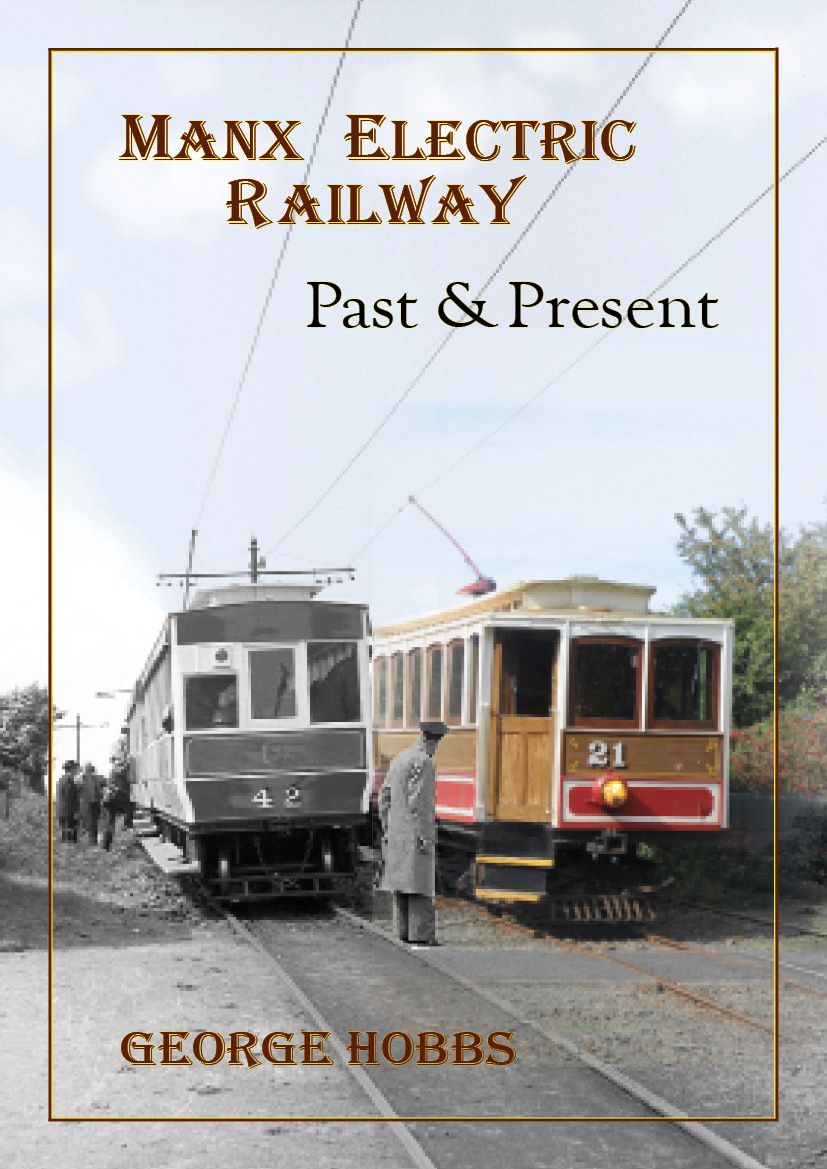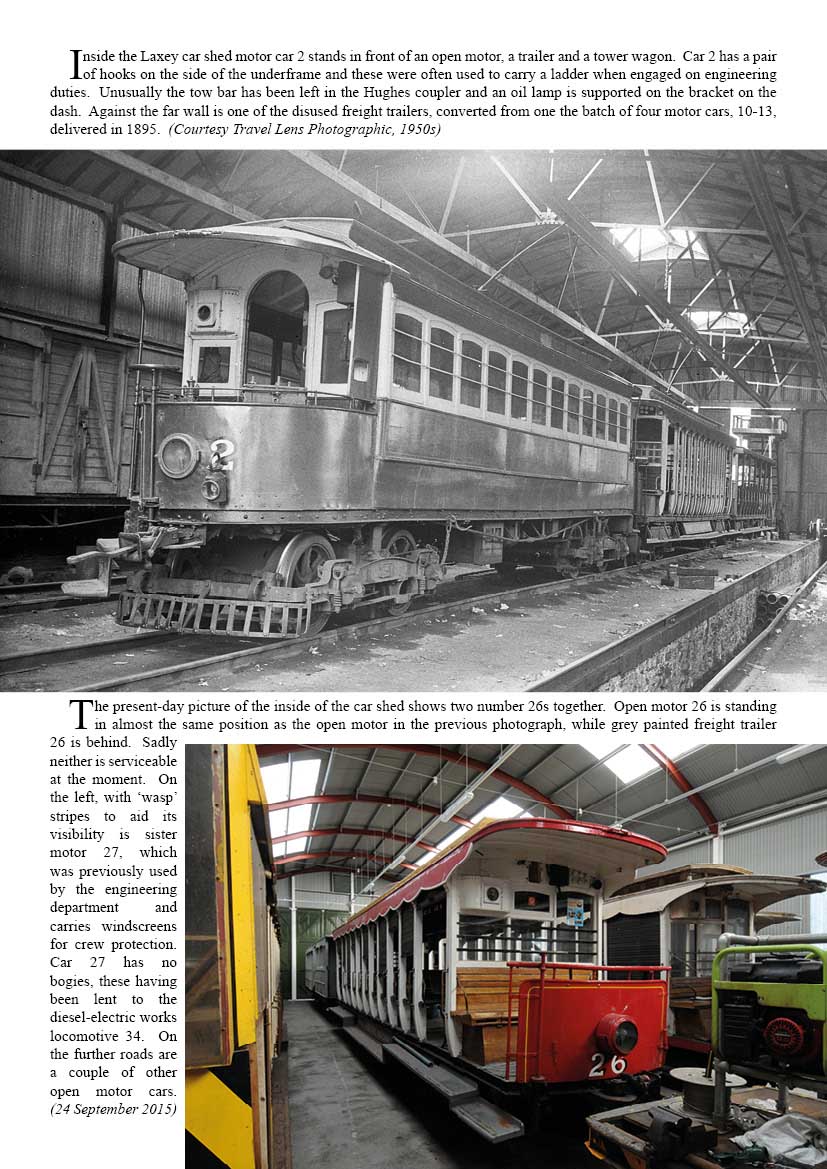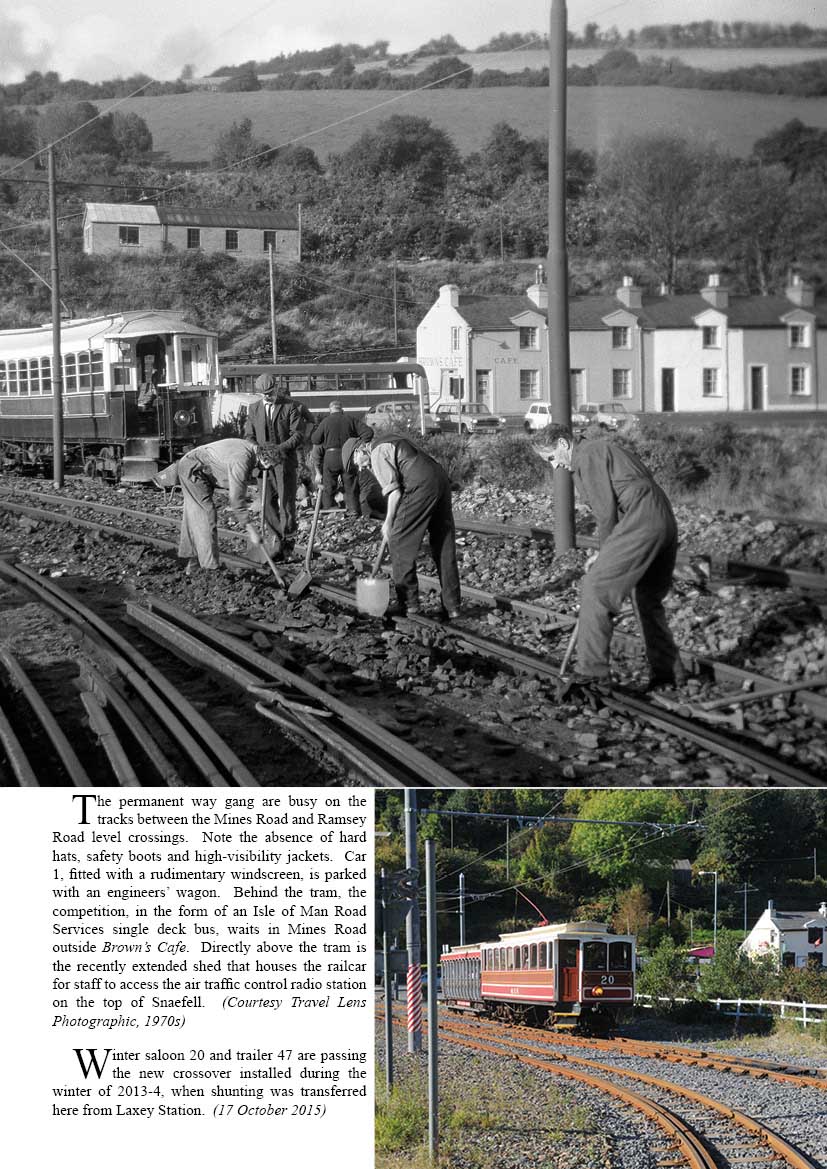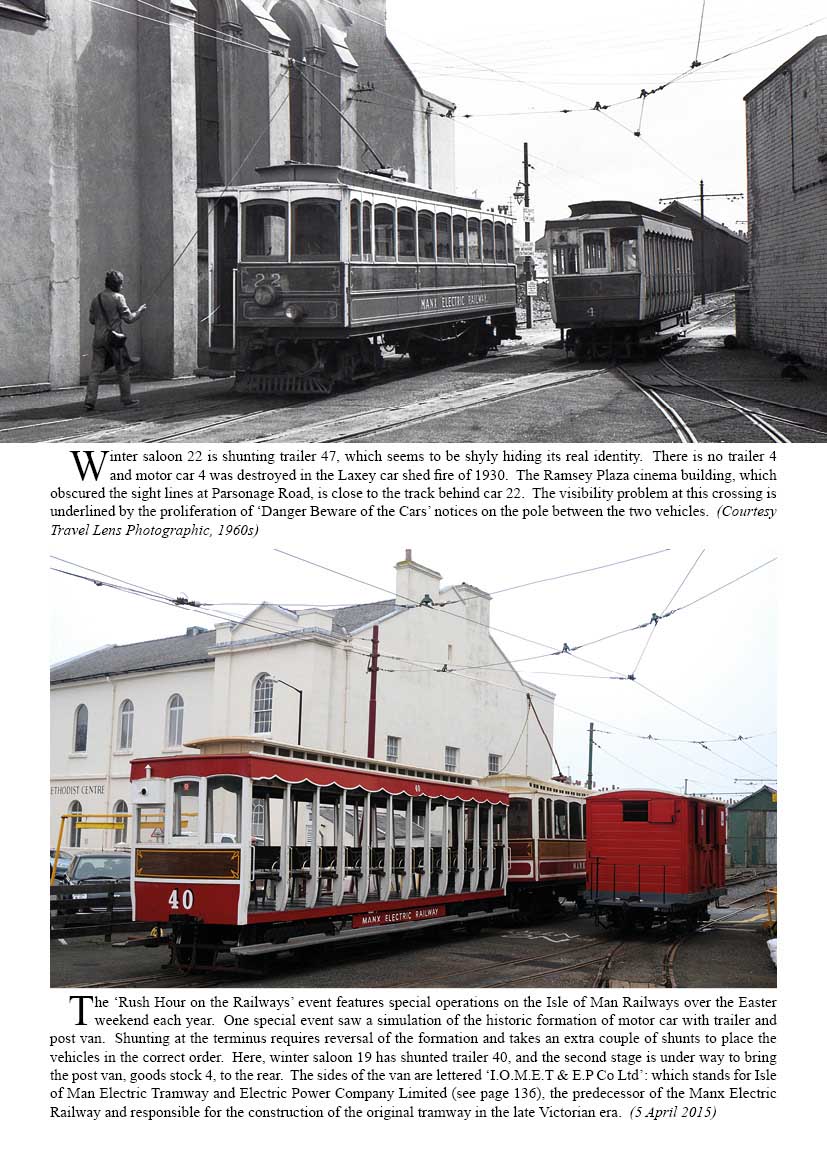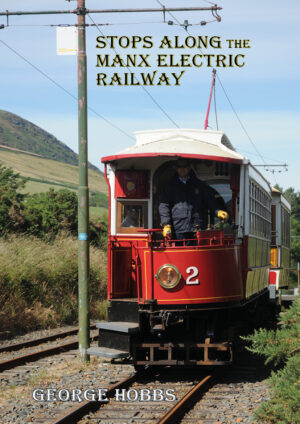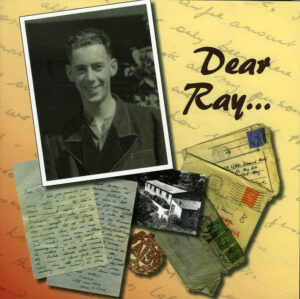Manx Electric Railway: past & present
£19.95
Written by George Hobbs
Photographs showing changes along the MER line over the last half century.
“The matching view of winter saloon 19 and trailer 41 shows the same tram at the same place doing the same job half a century later.”
Manx Electric Railway; past & present, page 56
The Manx Electric Railway may look as though it is set in a time warp, but that is not so. Like most things it has had to adapt to survive.
Some things have long gone. The huge iron shelter at Derby Castle was used by passengers for horse and electric trams, but was removed in 1980. The experimental building which was Summerland burnt down in 1973 in Britain’s worst peace-time fire, until that dubious crown went to the fire in Grenfell Tower, London, in 2017. The White City amusement park was closed in 1985 and its rides demolished; houses stand on the site now. The Garwick Glen station has since the 1950s vanished almost without trace under the encroaching trees.
Photographs of them all, and of what replaced them, are included in the book. Wherever possible the photographer has tried to match the location exactly. Occasionally an exact match has not been possible. In the past, photographers and, it has to be said, the tramway itself, took a much more relaxed attitude towards railway property. Nowadays trespassing is frowned on and rightly so. Even so, the changes are sometimes startling.
Memories are short and people often forget how things were, even though they might once have seen them every day. The old photographs in the book are reminders of what was familiar while their modern counterparts show how much or how little has changed. Through all the vicissitudes political, social, economic and ecological the old trams trundle up and down doing the job they were built for. Long may it be so.
Detective work
There are lots of books about the Manx Electric Railway (MER) and we were reluctant to clutter up enthusiasts' shelves with another one unless we could offer something a bit different. Then George Hobbs was loaned some archive photographs of the MER and invited to 'put them in a book. Somehow.'
The photographs were fascinating and we pored over them commenting on all the things which had changed - and a few which hadn't. Then we realised that what was really interesting was not just the photographs but how they compared with the same view today. People had commented on how much they liked the past and present aspect of one of George's other books, and the shape of the book was born.
We had a problem though. While the old photographs were, almost without exception, of good quality and rare, many of them were badly recorded. Often labels were missing and those that existed were occasionally wrong. One we thought was at Dhoon Quarry was actually next to Laxey car sheds but taken from an unusual angle. Another one had been labelled Dreemskerry Quarry but was really at Dhoon. One was recorded as Corkills Crossing and actually was at Corkills but the background had changed so much we had trouble believing it.
Slowly we worked out what was where and George put in a huge amount of legwork, popping up trackside to take the matching shots.
Some enthusiasts grumble that the MER isn't what it used to be. This book shows that that's true. In some cases it's better...
Copyright 2016 Loaghtan Books. All rights reserved.
